In Lorette, Manitoba, which is about 30 kilometres east of downtown Winnipeg and still in Treaty 1 Territory, there is a service road next to the Trans-Canada Highway where a sign stands that marks the longitudinal centre of Canada. It’s quite noticeable because it’s in the midst of a flat stretch of land; the kind that people talk about when they describe the prairies. Fields run along either side of the highway and the endless prairie sky innocently taunts daydreamers from above. What’s significant about this particular scene is that it represents what connects some of the NHL’s and, indeed, hockey’s best players across generations.
Whether they came from the hub in Winnipeg, small towns such as Baldur or Ste. Anne, or the northern provincial border town of Flin Flon, the hockey players discussed here in two all-time Manitoba-born lineups were all shaped by the land and peoples in the province in the centre of Canada. Whatever unique challenges or benefits that may involve, it’s helped to produce hundreds of elite hockey players.
The first lineup is an all-NHL group and the second draws from the Professional Women’s Hockey Players Association (PWHPA), the former Canadian Women’s Hockey League (CWHL), the Canadian Women’s National Team, and the Canadian Men’s Para Hockey Team. Decisions were difficult and many excellent players didn’t make the list. Let me know what you think of the lineups and leave a comment at the end of the article. Enjoy!
Centre: Jonathan Toews (Winnipeg, MB)
Let’s start right in the middle then. The depth of centres from Manitoba is undeniable. This was one of the most difficult positions to assess. He didn’t make the starting lineup, but Butch Goring (Saint Boniface, MB) deserves a nod for his four Stanley Cups and a Conn Smythe Trophy during the powerful run for the New York Islanders of the early 1980s. Similarly, to a certain generation, Bobby Clarke (Flin Flon, MB) is the best centre and, perhaps, player to come out of Manitoba. There’s certainly a good argument for it. His two Stanley Cup rings and three Hart Trophy wins (to name just a few accolades) are hard to argue with, along with the fact that he has still put up the most points by any Manitoban to play in the NHL (358 goals and 852 assists for 1,210 points) according to Hockey-reference.com.
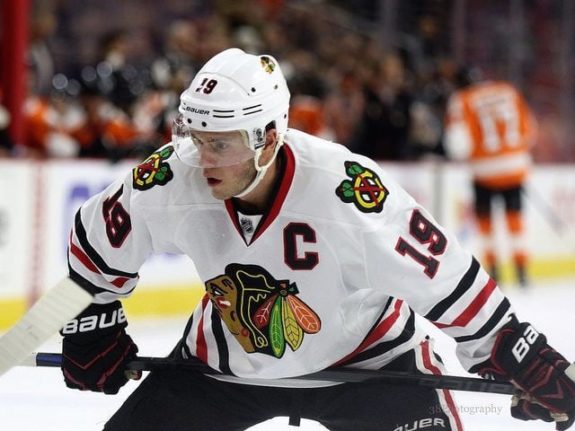
However, Jonathan Toews’s ability to take over a game is almost unrivaled in the fast-paced, tight hockey era of the first two decades of the 2000s. This is not an argument against Clarke’s leadership, because he was one of the best captains and leaders of his generation, but Toews was the leader of a dynasty Chicago Blackhawks team (winning three Stanley Cups) when there were no dynasty teams. Clarke played 201 more games than Toews and the points differential reflects that. Oddly, their playoff totals are nearly identical. Both amassed 119 points over 136 (Clarke) and 137 (Toews) games.
It’s difficult and potentially unfair to compare international resumes. Clarke played an integral role in the 1972 Summit Series, has a 1976 Canada Cup gold medal, and a bronze medal from the 1982 World Championships. He was a force whenever he stepped on the ice. Toews doesn’t necessarily have the dominant points totals again, but his presence and control in important games is undeniable.
He’s won a gold at nearly every level of international play. It’s difficult to forget the three-goal performance for Canada in the shootout in the 2007 World Junior Championship semi-final against the United States. He also carried an elite Team Canada at the 2010 Winter Olympics where he was awarded the title “Best Forward” of the tournament. That’s right. When the best players from around the world came together to represent their country, Toews was singled out as the best. It was also the same year he won his first Stanley Cup and the Conn Smythe Trophy. Here’s hoping that he regains his health and can suit up again soon.
Right Wing: Reggie Leach (Riverton, MB)
Another difficult decision had to be made on the right side. There’s a strong argument for putting Andy Bathgate (Winnipeg, MB) beside Toews in this lineup, but I’ve got to go with the Riverton Rifle, Reggie Leach, on the right wing. Bathgate is a member of the Hockey Hall of Fame, a Stanley Cup and Hart Trophy winner, and a points machine. He played 18 seasons of professional hockey and barely slowed production into his late 30s and early 40s. I also understand starting Bathgate and keeping two-thirds of the infamous LCB line (Leach, Clarke, Bill Barber) from the mid-’70s Philadelphia Flyers together. However, I put Leach in the starting lineup because he’s one of the best pure shooters to ever play the game.
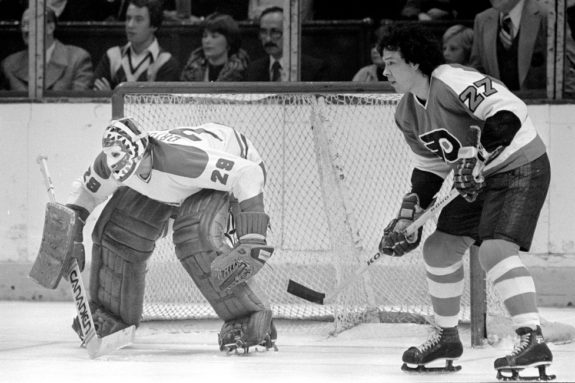
Leach scored 381 goals over 934 games. That’s 32 more goals than Bathgate in 135 fewer regular season games. Leach’s career regular season shooting percentage is a solid 13.3 percent and, according to Hockey-reference.com, jumps to 13.8 percent in the playoffs. This includes an outstanding 31.1 percent during the 1976 Playoffs when he won the Conn Smythe Trophy as a forward on the losing team. He’s still the only non-goaltender of the Stanley Cup finalist team to ever win playoff MVP. Bathgate was a regular season powerhouse, but Leach was that playoff scoring master that can finish when you need a goal. Of course, if the chemistry between Leach and Toews isn’t there in this hypothetical scenario, then you can bump Bathgate up to the top line and not worry.
Left Wing: Patrick Sharp (Winnipeg, MB)
On left wing, Toews will find a familiar teammate. It wasn’t until Patrick Sharp’s second full season with the Blackhawks that he found his footing as an offensive presence, which coincides with the arrival of Toews, oddly enough. Sharp was a respected defensive-minded forward (receiving Selke Trophy votes five times), but put up consistently strong offensive numbers during his time in Chicago. The peak of this includes finishing first on the Blackhawks in points in 2013-14 at age 32.
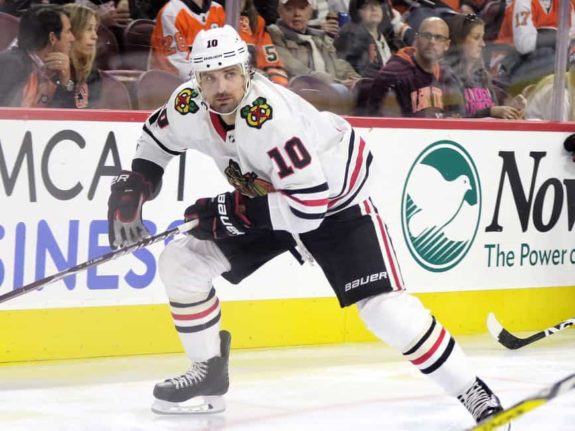
He was a key leader on the Chicago dynasty team of the 2010s and has three Stanley Cup rings as a result. He is the most deserving candidate of this spot on the left side, even if some might quibble with the fact that he moved away from Winnipeg as a child. He didn’t play minor hockey in Manitoba, which might be a requirement for a different list, but he satisfies the Manitoba-born requirement for this one. Three-time Stanley Cup winner Ab McDonald (Winnipeg, MB) or left wing assist leader Dennis Hextall (Poplar Point, MB) could jump in if needed and slot in nicely on the second and third lines.
Left Defense: Duncan Keith (Winnipeg, MB)
It’s almost unbelievable that three members of the Blackhawks dynasty team of the 2010s were born in Manitoba, never mind in Winnipeg. Duncan Keith was an integral member of these teams and continues to be a key member of the Blackhawks. He has already collected two Norris Trophies, a Conn Smythe Trophy, three Stanley Cup rings, and two gold medals with Team Canada at the Winter Olympics. He eats up a ton of ice time, but isn’t just a pylon. His speed, defensive prowess, and puck-moving skills are what make him such a valuable player, and what many young defensemen are looking to emulate. He’s played every game of his NHL career as a member of the Blackhawks and will likely enter the Hall of Fame in his first year of eligibility.

If you prefer a real stay-at-home defenseman, you could pick Dallas Smith (Hamiota, MB). He’s an excellent selection that I would designate for the second pair only because you have Keith. Smith was Bobby Orr’s anchor while in Boston and won two Cups with the Bruins in 1970 and 1972. He didn’t pile on the points, but that wasn’t his job. He was the grounding presence that allowed Orr to rush up and down the ice and change the face of the defensive position. Smith was also named to Team Canada for the 1972 Summit Series but declined the nomination in order to work his farm in the offseason. He would serve as a solid anchor for whichever pair he ends up on.
Right Defense: Tom Johnson (Baldur, MB)
The depth and left defense is so strong that I had to make the decision to try Tom Johnson on the right side in order to get him into this lineup. He played the left side for the Montréal Canadiens through the 1950s and early 1960s, winning six Stanley Cups as a player. He won two more with the Bruins as an assistant general manager and coach. His “hockey IQ” made him a strong defensive player and support to the many superstars on the Canadiens of the 1950s. He was a versatile player and sometimes jumped up to centre at the request of coach Dick Irvin if the Canadiens were pressing for a late goal.
Johnson won the Norris Trophy in the 1958-59 season, leading Canadiens defensemen with 39 points. The “Baldur Basher” was an underrated presence on one of the greatest teams in NHL history. I think he’d fit in just fine on the right side.
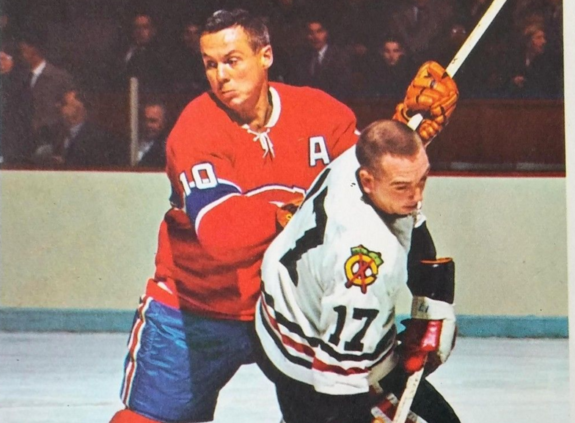
You could slot Babe Pratt (Stony Mountain, MB) in if need be, or put him on the second pair to play alongside Smith. Pratt put up 29 more points than Johnson in 460 fewer games, but again, it’s not always just about the points. A balanced defensive core would have Keith with Johnson and Smith with Pratt. Pratt also adds two Stanley Cups (1940 and 1945) and a Hart Trophy in 1944 to this list.
Goalie: Walter “Turk” Broda (Brandon, MB)
Turk is getting the net because his playoff stats are ridiculously good and it sounds like he had the kind of personality that was outrageous. He would have thrived in this era of social media followers and (gradual) player empowerment. Terry Sawchuk (Winnipeg, MB) and Ed Belfour’s (Carman, MB) regular season stats are slightly better across more seasons in the NHL (21 and 17, respectively, to Broda’s 14), according to Stathead.com. Sawchuk and Belfour have a career 2.50 goals-against average (GAA), while Broda’s is slightly higher at 2.53. However, once the playoffs hit, Broda became nearly unbeatable. His career playoff GAA is a 1.98, which is better than Sawchuk and Belfour and other superstar goaltenders such as Martin Brodeur, Dominic Hašek, and Jacques Plante.
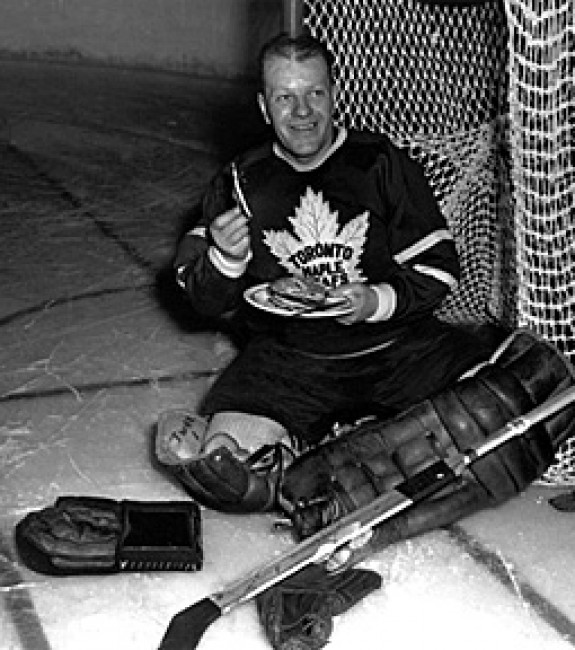
Sawchuk, Belfour, and Broda are all members of the Hockey Hall of Fame and all have at least two Vezina Trophy wins (four, two, and two, respectively). Broda takes the cake with Cups, however. He won five Stanley Cup championships while Sawchuk finished a close second with four, and Belfour had one. It’s a difficult decision no matter who you go with, but I’d go take the ups and downs in the regular season to see Broda play in the playoffs.
Beyond the NHL
If we look outside the NHL, there’s more world-class talent that can make up another all-time Manitoba-born lineup. Here it is:
Centre: Bailey Bram (Ste. Anne, MB)
Bailey Bram has excelled at nearly every level of hockey throughout her career. After first representing Manitoba at the National Women’s Under-18 Championships in 2007, she made the jump to the national team and won a silver medal with Team Canada at the Women’s World Under-18 Championships. This was her first of seven medals representing Canada over her career. She added a gold at the 2012 Women’s World Championships and a silver at the 2018 Winter Olympics in Pyeongchang, South Korea.
Bram played NCAA hockey for the Mercyhurst Lakers and made an appearance in the Frozen Four during the 2008-09 season. She had a career-high 68 points over 32 games in 2011-12. She was drafted by the Brampton Thunder of the Canadian Women’s Hockey League (CWHL) in 2012 and won a Clarkson Cup with the Calgary Inferno in 2016. In between her time with the Thunder and the Inferno, she made a stop in Sweden in the Riksserien (women’s ice hockey league) and won a championship with Linköping HC. With such a decorated career, Bram earns a spot in this lineup.
Left Wing: Susie Yuen (Winnipeg, MB)
It’s hard to imagine this lineup without Susie Yuen. At 4-foot-11, she is certainly the smallest player on the list, but perhaps one of the most important. Yuen started as a ringette player and eventually switched to hockey while attending the University of Manitoba. She was a standout player to the point where she was chosen to represent Team Canada for the first IIHF-sanctioned Women’s World Championships in 1990.
Over five games in the tournament, Yuen put up 12 points, including a key insurance goal in the final. Her five goals and seven assists helped Canada win the first Women’s World Championship title. This was her only appearance as a player on the national stage, but the significance is immeasurable. Women’s hockey made its first appearance at the 1998 Winter Olympics, thanks in part to the work and talent of the women in the first IIHF Women’s World Championships. Yuen also went on to coach women’s hockey in China briefly before returning to Winnipeg. She is a member of the Manitoba Hockey Hall of Fame and an important presence in this all-time lineup.
Right Wing: Bryan Sholomicki (Winnipeg, MB)
Bryan Sholomicki started playing sledge hockey in 2012 for the Elmvale Bears. In only three years, he made it to the national level and represented Team Canada at the 2015 IPC World Para Hockey Championship and World Sledge Hockey Challenge. Over another span of three years, he played 59 games with Team Canada and won seven medals, including gold at the 2017 IPC World Para Hockey Championship and silver at the 2018 Paralympics.
Sholomicki finished his career with the national team with 34 points including an evenly dispersed 17 goals and 17 assists. In his first game at the 2018 Paralympics, he scored a hat trick and added two assists to help Canada move past Sweden in the preliminaries. His leadership was also recognized in 2016-17 when he was named an alternate captain for the team. His skill and leadership make him an excellent addition to this starting lineup.
Left Defense: Jocelyne Larocque (Ste. Anne, MB)
Like Bailey Bram, fellow Ste. Anne hockey player, Jocelyne Larocque, has excelled at every level of her career. She won two NCAA National Championships with the University of Minnesota-Duluth Bulldogs (2008 and 2010) and was named the Women’s College Hockey Association’s (WCHA) defensive player of the year in 2011. She put up 27 points in 28 games for the Bulldogs during the 2010-11 season. In the same year, she made her first appearance with the national team at the Women’s World Championships and won a silver medal. This was her first of seven medals at the tournament, including a gold in 2012, the same year she entered the CWHL.
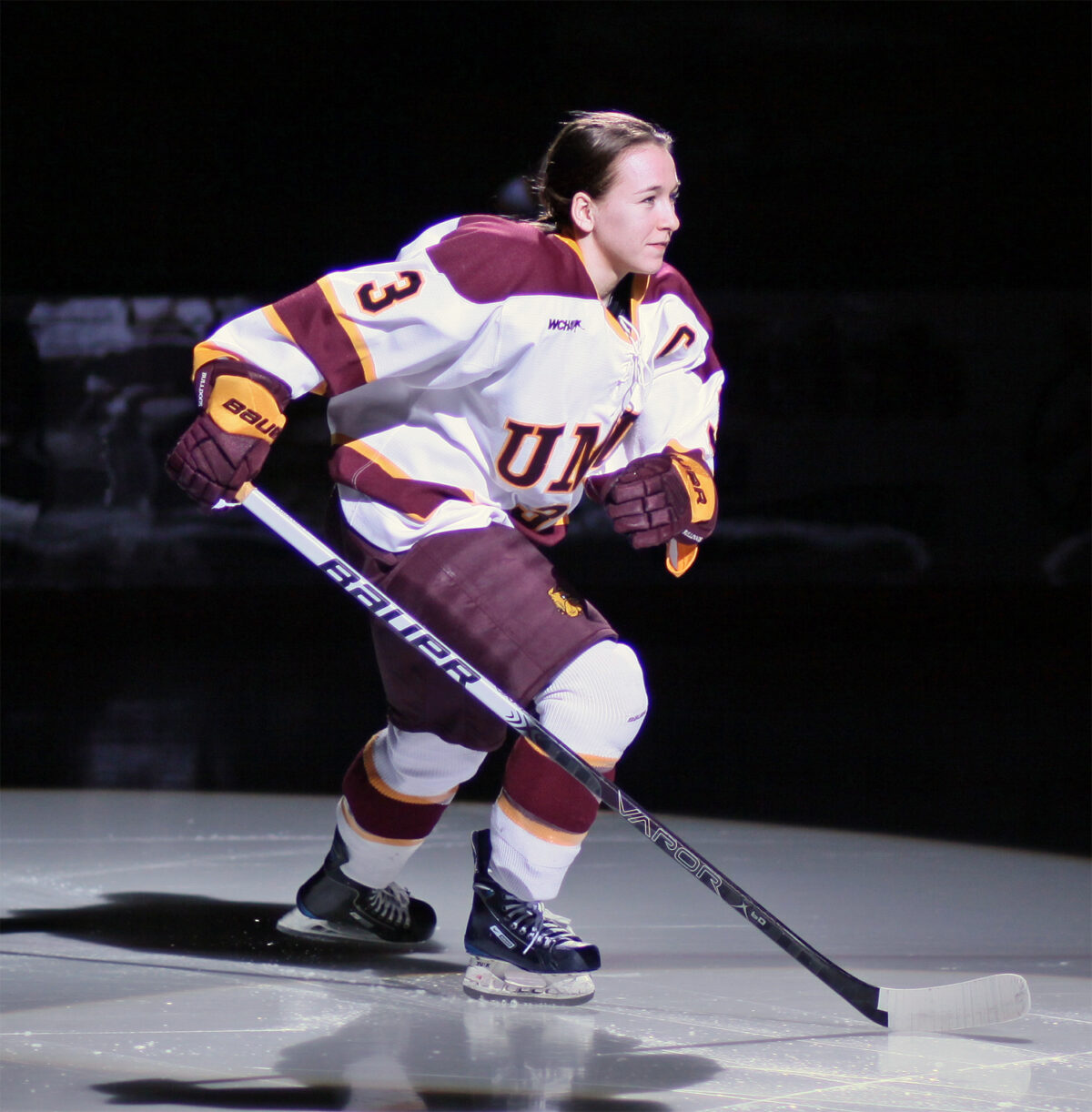
In 2014, she made her Winter Olympics debut, making her the first Métis woman to participate in the ice hockey tournament, and won gold. In 2018, she had an outstanding year, winning silver at the Olympics with Team Canada, the Clarkson Cup as captain of the Markham Thunder, and a national Tom Longboat Award. Larocque is currently an independent member of the Professional Women’s Hockey Players Association (PWHPA) and was recently named the Manitoba Indigenous Female Athlete of the Decade for her long list of accomplishments and contribution to sport. Larocque is a lock for this list and is a player you build the defensive core around for the rest of this lineup.
Right Defense: Brigette Lacquette (Mallard, MB)
Lacquette is the youngest player on this list, but easily earns a spot on this top pair. She has five medals between four IIHF-sanctioned events and one appearance at the Winter Olympics. She won gold at the IIHF World Women’s Under-18 Championships and was also named Top Defenceman of the tournament. She put up 13 points in five games, including two goals and 11 assists. As teammates with Bram and Larocque, she won a silver at the 2018 Winter Olympics. In 2016, she won the Clarkson Cup with Bram and the Calgary Inferno, maintaining a point-per-game pace throughout the season and playoffs. Lacquette won a second Clarkson Cup with the Inferno in 2019.
Following in the footsteps of Larocque, Lacquette attended the University of Minnesota-Duluth to play for the Bulldogs after playing elite hockey across Manitoba. In her freshman season, she tallied 20 points in 36 games, a total she surpassed in her sophomore and senior seasons. In 2019, she won an Indspire Award for her contribution to sport as the first First Nations athlete to play on the Canadian National Women’s Hockey Team at the Olympics and for her work with many Indigenous communities, particularly young girls in sport. She currently plays for the Calgary team of the PWHPA and can add to this already distinguished career.
Goalie: Sami Jo Small (St. Vital/Winnipeg, MB)
This lineup wouldn’t be complete without Sami Jo Small. Her starting spot was in place long before I wrote this section. Small has eight international medals between five IIHF Women’s World Championships and three Olympic games. Seven of those eight medals are gold. Further, she won the Best Goalie award for the 1999 and 2000 IIHF Women’s World Championships, posting a tournament best .982 save percentage. Small co-founded and played in the CWHL, winning the Clarkson Cup in 2013-14. She became the first goaltender in league history to reach the 60-win mark in February of that season and went 6-1-1 over eight games.

Before any of these accomplishments, Small was a track and field start at Stanford University and played goalie for the Stanford men’s hockey team. This diverse sporting background helped her become one of the first elite goaltenders in women’s national team history (along with Kim St-Pierre). Her drive and perseverance brought on different challenges in her retirement. She went on to manage the Toronto Furies of the CWHL for a time, continues to run a hockey school for women, is a public speaker, an accomplished writer, and podcast host. She is a legendary figure of hockey in Canada.
There it is. Two solid starting lineups comprised of the best Manitoba-born hockey players from across generations. Let me know what you think in the comments below.